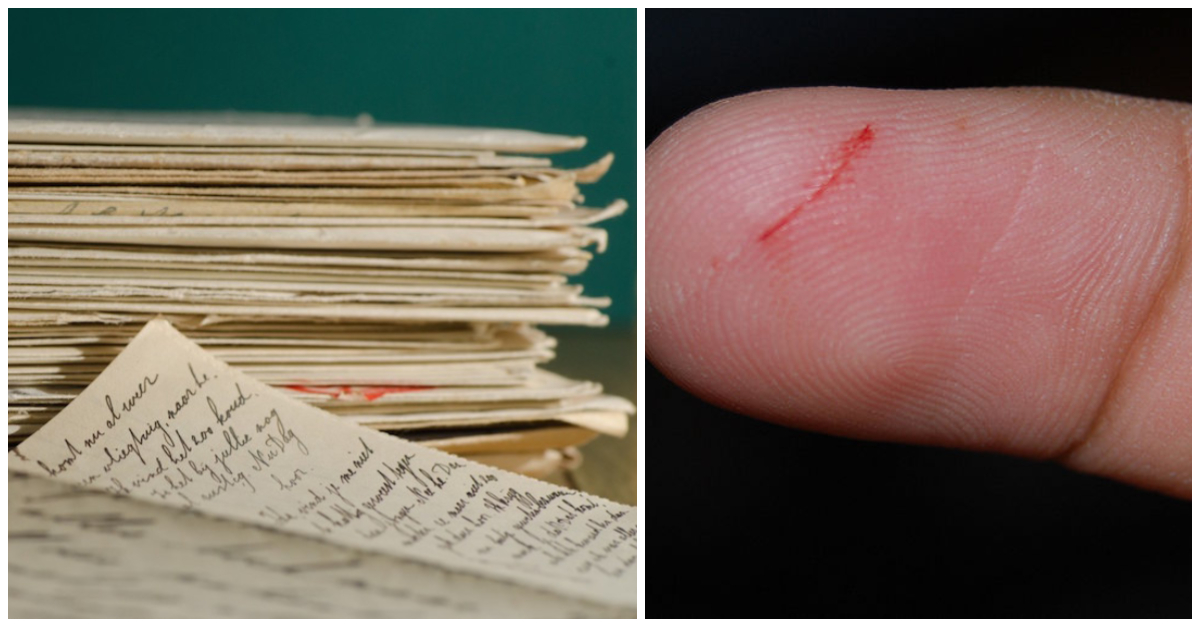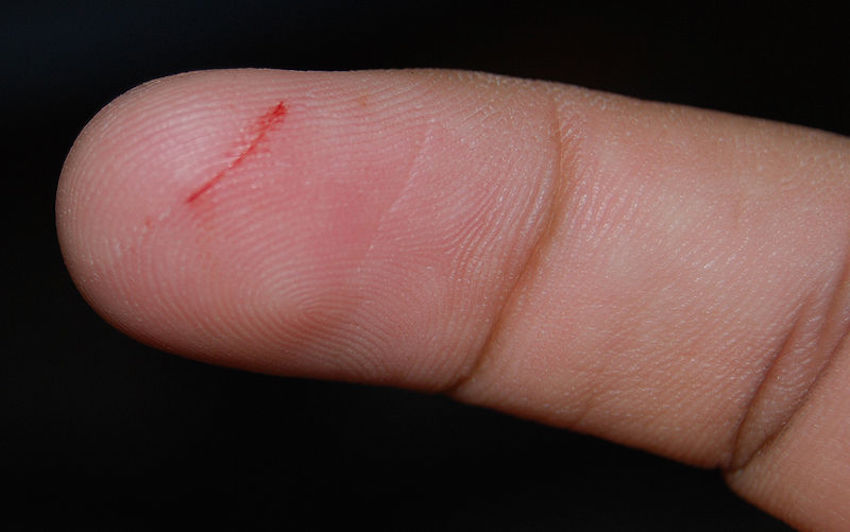

Imagine this situation: You get a big stack of mail from your mailbox, but as you’re sliding your finger to open one of the envelopes, the paper slices your finger.
If that scenario made you cringe, you’re not alone. Getting a paper cut is one of the most surprising and painful experiences. No matter how small the cut is, it seems to hurt way more than other small injuries.


Almost everyone has gotten paper cuts before — and they’re the absolute worst. And all you can really do is put an adhesive bandage on it and hope it stops hurting soon.
So why exactly are paper cuts so painful? Well, there’s some pretty interesting science behind it.
First of all, the reason paper is able to cut us is because it’s so thin. In fact, paper is much thinner than knife blades!
Unfortunately, the edges of paper are not very smooth. This means that when you look at paper up close, the edge looks more like a saw than a smooth blade. When paper cuts you, it’s much more ragged than if a knife cuts you.
Another reason paper cuts hurt so much? Because they typically occur on your fingers. You may not know this, but your fingers have a higher concentration of pain receptors than other parts of your body. If you were to get a paper cut on your leg, it probably wouldn’t hurt nearly as much.
Most paper is also bleached, which can irritate the cut. Although most paper cuts resolve themselves, if you don’t keep them clean and properly treated, they can become infected.
Check out the video below for more information. How often do you get paper cuts? If you hate these painful little injuries, don’t forget to share this article with your friends.
Hollywood “curses” are a strange thing as people tend to look at the collective deaths…
74-year-old Michael Esmond is putting on the Santa Claus gear this year once again as…
Police officers from Orlando, FL donated and delivered Christmas gifts to more than 200 kids…
On December 9, 1965, a blue-tinged fireball streaked across the sky over Kecksburg, Pennsylvania. However,…
Over years, less emphasis ended up placed on traditional Sunday family dinners. In those times,…